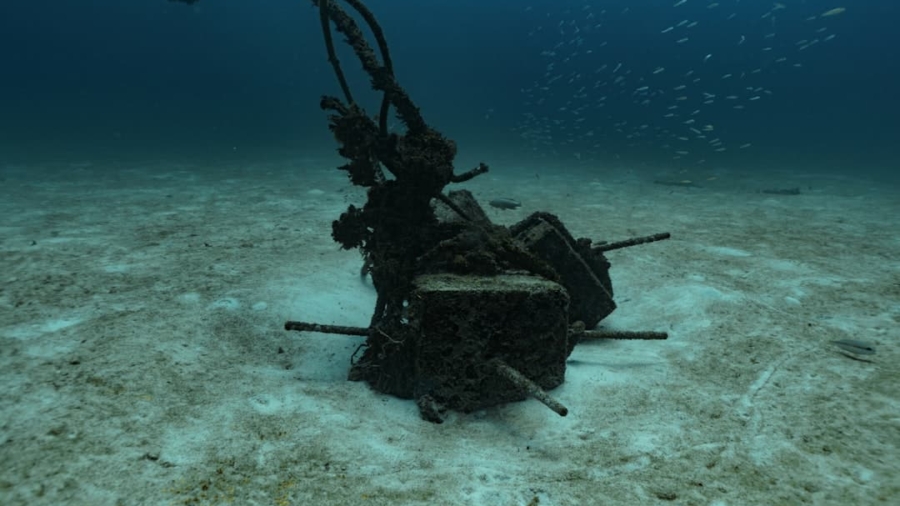Underwater drones, also known as remotely operated vehicles (ROVs) or autonomous underwater vehicles (AUVs), represent a significant technological advancement in marine exploration and research. These sophisticated devices are designed to operate beneath the surface of the water, allowing scientists and researchers to gather data and conduct experiments in environments that are often inaccessible or hazardous to human divers. The development of underwater drones has been propelled by advancements in robotics, sensor technology, and materials science, enabling these vehicles to withstand the extreme conditions found in deep-sea environments.
The versatility of underwater drones is one of their most compelling features. They can be equipped with a variety of sensors and cameras, allowing them to capture high-resolution images, collect water samples, and monitor environmental conditions. This capability has opened new avenues for marine research, providing insights into ecosystems that were previously difficult to study.
As the demand for sustainable ocean management and conservation grows, the role of underwater drones in marine research becomes increasingly critical, offering innovative solutions to some of the most pressing challenges facing our oceans today.
Key Takeaways
- Underwater drones are unmanned vehicles designed to operate underwater, used for various purposes including marine research.
- Advantages of using underwater drones for marine research include cost-effectiveness, accessibility to remote or dangerous areas, and the ability to collect data without disturbing marine life.
- Applications of underwater drones in marine research include mapping the ocean floor, studying marine life behavior, monitoring environmental changes, and conducting underwater inspections.
- Underwater drones are changing the way marine research is conducted by providing researchers with a new tool for data collection and exploration in the underwater environment.
- Challenges and limitations of using underwater drones in marine research include limited battery life, communication range, and potential impact on marine ecosystems.
Advantages of Using Underwater Drones for Marine Research
One of the primary advantages of underwater drones is their ability to operate in environments that are inhospitable to human divers. The deep sea, for instance, presents numerous challenges, including extreme pressure, low temperatures, and complete darkness. Underwater drones can be deployed to depths that would be perilous for human researchers, allowing for the exploration of previously uncharted territories.
This capability not only enhances our understanding of marine biodiversity but also aids in the discovery of new species and ecosystems. Moreover, underwater drones can be deployed for extended periods, collecting data over time without the need for constant human oversight. This endurance is particularly beneficial for long-term studies of marine environments, such as monitoring coral reef health or tracking migratory patterns of marine species.
The ability to gather continuous data allows researchers to identify trends and changes in marine ecosystems, providing valuable information for conservation efforts and policy-making. Additionally, the cost-effectiveness of using drones compared to manned missions makes them an attractive option for many research institutions facing budget constraints.
Applications of Underwater Drones in Marine Research

Underwater drones have found a multitude of applications in marine research, ranging from ecological studies to geological surveys. One prominent application is in the field of marine biology, where these vehicles are used to study fish populations, monitor coral reefs, and assess the health of marine habitats. For example, researchers have utilized underwater drones equipped with high-definition cameras to conduct surveys of coral reefs, capturing detailed images that allow for the assessment of coral cover and biodiversity.
This information is crucial for understanding the impacts of climate change and human activity on these vital ecosystems. In addition to biological studies, underwater drones are also employed in oceanographic research. They can measure various physical and chemical properties of seawater, such as temperature, salinity, and nutrient levels.
This data is essential for understanding ocean circulation patterns and their influence on global climate systems. Furthermore, underwater drones are increasingly being used in geological studies to map the seafloor and investigate underwater geological formations. By providing high-resolution imagery and data collection capabilities, these drones contribute significantly to our understanding of tectonic processes and sediment dynamics.
How Underwater Drones are Changing the Way Marine Research is Conducted
The advent of underwater drones has revolutionized marine research methodologies. Traditional methods often relied on manned submersibles or divers, which limited the scope and scale of research efforts. With the introduction of drones, researchers can now conduct large-scale surveys with greater efficiency and precision.
The ability to deploy multiple drones simultaneously allows for comprehensive data collection across vast areas, facilitating a more holistic understanding of marine environments. Moreover, the integration of advanced technologies such as artificial intelligence (AI) and machine learning into underwater drones is further enhancing their capabilities. These technologies enable drones to autonomously navigate complex underwater terrains, identify marine species through image recognition, and even analyze data in real-time.
This shift towards automation not only increases the efficiency of data collection but also reduces the potential for human error. As a result, researchers can focus more on analysis and interpretation rather than on the logistical challenges associated with data gathering.
Challenges and Limitations of Using Underwater Drones in Marine Research
Despite their numerous advantages, underwater drones also face several challenges and limitations that researchers must navigate. One significant challenge is the technical complexity involved in operating these vehicles. While advancements in technology have made drones more user-friendly, they still require specialized training for effective operation.
Researchers must be proficient in both piloting the drone and interpreting the data it collects, which can be a barrier for some institutions. Additionally, underwater drones are often limited by battery life and operational range. Most AUVs have a finite amount of energy that restricts their operational duration and depth capabilities.
Furthermore, environmental factors such as strong currents or turbulent waters can affect drone performance and data quality. Researchers must carefully plan their missions to account for these variables to ensure successful outcomes.
Future Implications of Underwater Drones in Marine Research

The future implications of underwater drones in marine research are vast and promising. As technology continues to advance, we can expect significant improvements in drone capabilities, including enhanced sensors that provide even more detailed data about marine environments. Innovations such as improved battery technology may extend operational ranges and durations, allowing researchers to explore deeper and more remote areas of the ocean than ever before.
Moreover, the integration of collaborative networks among multiple drones could lead to groundbreaking discoveries in marine science. By coordinating efforts between several drones equipped with different sensors or research tools, scientists could gather comprehensive datasets that provide insights into complex ecological interactions or geological processes. This collaborative approach could also facilitate real-time monitoring of environmental changes, enabling rapid responses to emerging threats such as oil spills or harmful algal blooms.
Ethical Considerations of Using Underwater Drones in Marine Research
As with any technological advancement, the use of underwater drones in marine research raises important ethical considerations that must be addressed. One primary concern is the potential impact on marine life. The presence of drones may disturb sensitive ecosystems or interfere with the natural behaviors of marine species.
Researchers must carefully design their studies to minimize disturbances and ensure that their activities do not harm the very environments they aim to study. Additionally, there are ethical implications related to data collection and ownership.
Ensuring that data is shared responsibly and used for conservation efforts rather than exploitation is crucial for maintaining ethical standards in marine research. Furthermore, researchers must consider the implications of their findings on local communities that depend on marine resources for their livelihoods.
The Impact of Underwater Drones on Marine Research
The impact of underwater drones on marine research is profound and multifaceted. By providing unprecedented access to underwater environments and enabling detailed data collection, these vehicles are transforming our understanding of marine ecosystems. The advantages they offer—such as cost-effectiveness, extended operational capabilities, and enhanced data quality—position them as essential tools for modern marine scientists.
As we continue to explore the depths of our oceans with these innovative technologies, it is imperative that we remain mindful of the ethical considerations surrounding their use. Balancing scientific inquiry with environmental stewardship will be crucial as we navigate the challenges posed by climate change and human activity on marine ecosystems. Ultimately, underwater drones hold great promise for advancing marine research while fostering a deeper appreciation for the complexities and wonders of our oceans.
The article “Why Underwater Drones Are Revolutionizing Marine Research” highlights the transformative impact of underwater drones on marine exploration and data collection. A related article that complements this discussion is this review of smartwatches by Fossil, which delves into the advancements in wearable technology. While seemingly unrelated, both articles underscore the broader theme of how cutting-edge technology is enhancing our ability to gather and analyze data, whether it be in the depths of the ocean or through the convenience of a wristwatch. These innovations are part of a larger trend of integrating technology into various fields to improve efficiency and outcomes.
FAQs
What are underwater drones?
Underwater drones, also known as unmanned underwater vehicles (UUVs) or remotely operated vehicles (ROVs), are submersible vehicles that can operate underwater without a human occupant.
How are underwater drones revolutionizing marine research?
Underwater drones are revolutionizing marine research by providing scientists with a cost-effective and efficient way to explore and study the ocean. They can collect data, take samples, and capture images and videos of marine life and underwater environments.
What are the advantages of using underwater drones for marine research?
Underwater drones can access hard-to-reach or dangerous underwater environments, operate for extended periods of time, and collect data without disturbing marine life. They also reduce the need for human divers in risky situations.
What types of research can be conducted using underwater drones?
Underwater drones are used for a wide range of marine research, including studying marine biodiversity, monitoring coral reefs, mapping the seafloor, tracking marine animals, and investigating underwater ecosystems.
How are underwater drones used in conservation efforts?
Underwater drones are used in conservation efforts to monitor and protect marine environments. They can help identify and track endangered species, assess the impact of human activities on marine ecosystems, and aid in the restoration of damaged habitats.
What are some examples of underwater drones being used in marine research?
Underwater drones have been used to explore the depths of the ocean, study the behavior of marine animals, map underwater archaeological sites, and investigate the effects of climate change on marine ecosystems.

